No one likes to sit on the side of the fire pit that always seems to have smoke blowing into it. What about that friend that always seems to be a magnet for the smoke, regardless of what spot they sit in? Instead of relaxing, you spend the whole night playing musical chairs, and at that point, you might as well head inside. Right?
What if there was a way you could minimize fire pit smoke so everyone can enjoy their time sitting around the fire pit? Understanding what causes excess smoke will help you eliminate it, so read on for some easy steps to make your time outside more fun and relaxing.

What Causes Campfire Smoke?
Burning wood in a fire pit is obviously going to emit at least a little bit of smoke, but what makes the unreasonable amount of smoke that makes everyone’s eyes burn? Put simply, the wood you burn is the biggest cause of excess smoke, but don’t panic. The solution isn’t as complex as you think it is.
Wood smoke is primarily caused by burning certain chemicals that naturally make up hardwoods like oak, ash, and hickory or softwoods like pine, spruce, and fir. Lots of smoke is created when these chemicals are heated inefficiently and result in an incomplete burning of the wood. Excess fire pit smoke is frequently caused by burning firewood with extra moisture in it, typically green wood or wood that has not fully dried out. “Green wood” refers to wood that has been freshly cut or is from a tree that may not have died before it was cut. Wood types that contain pitch, sap, or other naturally occurring liquids and substances can also create extra smoke. In short, wood that is wet or green will create a lot of smoke.
How to Reduce Campfire Smoke
Just as there are lots of ways to light a fire, there are lots of ways to try to reduce the amount of smoke that swirls around your bonfire. Nothing says “It’s time to go inside” like the burning in your eyes and throat that campfire smoke causes. Using these six simple tips, you can minimize the amount of smoke intruding your backyard bonfire so everyone can enjoy the setting and relax.
1: Keep Your Fire Pit Clean
There is no need to spray your fire pit down or get it squeaky clean after each use. Simply properly dispose of the ash and remaining coals after each fire. Make sure to give everything ample time to cool down completely and dispose of all fire remnants into a safe area. You can also use a shop vac to clean up ashes.
Debris such as ash, embers, dirt, and partially burned pieces of firewood can impede the heating up process and the successful burning of your fires, resulting in more smoke swirling around your circle. Building a fire on top of old debris can make it more difficult for the fire to start and to get hot enough to produce as little smoke as possible. It can also disrupt the airflow and circulation needed to keep a roaring fire.
It is important to keep your fire pit clean to help fires burn better and to keep your fire pit looking nice and inviting. An easy way to keep your fire pit clean between uses is to use a fire pit cover or store it indoors in a dry place to keep it from rusting. Covering your fire pit will also save you from having to clean ash, water, or dirt from it when you want to use it next.

2: Stack Firewood in Your Fire Pit Properly
Even though tossing a couple pieces of chopped wood with some kindling into the pit might get a fire started, it’s not going to do you any favors in the smoke department. Hot Tip #1: Good airflow within your fire pit is key to eliminating excess smoke. Airflow helps feed the fire oxygen to get it heated up quicker and maintain a temperature that will keep smoke amounts at bay. The best way to ensure good airflow is to take the time to set up the wood in configurations that help circulate the air. Use tools, like log grabbers, to reposition and add pieces of wood as the fire burns.
Taking the time to stack the firewood in the fire pit may be tedious and seem ridiculous, but it will make a world of difference as your fire burns on. The teepee or log cabin firewood stacking methods will keep air flowing and provide “housing” for tinder and kindling. The log cabin method has plenty of gaps for air to flow through to feed the fire. The teepee method has a completely open base to allow air to move through and around the flames. The log cabin method is more stable and easier to maintain than the teepee method, but they both work well. Combining the two methods has been known to have the best effect in the long run, but it is best to use the method that best fits into your fire pit.
Smaller logs and pieces of wood are always better than large pieces for starting a fire and keeping it going well. Adding smaller pieces of wood (kindling) to the middle of the fire early on will help light it and get it to heat up quickly and properly. The kindling will help the fire spread to the larger pieces of wood in the fire pit. Using newspaper, dryer lint, or a fire starter of some kind can be helpful in getting the fire started.
3: Use Good, Dry Wood
Hot Tip #2: Using wet wood is going to create more smoke than flame. Wood that is dry all the way through will produce much less smoke and burn better for longer than wood with moisture trapped inside. Dry wood is critical when trying to light a fire, keeping one going, and minimizing smoke. Do not burn anything other than wood. Don’t throw garbage, cans, glass, plastic, or other things into the fire as that will cool it down and create more smoke. You can tell when two pieces of wood are dry enough by hitting them together and listening for a high pitch, ringing sound. Wet wood is heavier and will create a low pitched thunk when hit together.
Hardwood
Using well-seasoned hardwoods is the best kind of wood to use when building and maintaining a bonfire with little smoke. Green wood contains too much moisture, causing it to smoke when being burned. It will eventually stop smoking when all the moisture is removed, but that typically takes a while. Hardwoods are known to smoke less than other wood types. Hardwoods include hickory, oak, ash, and maple.
Hardwoods are naturally pretty dense, so they typically hold less water than others. However, some do tend to smoke more than others. Low smoking hardwoods include hickory, oak, ash, and maple. Options that may smoke more are elm, poplar, and eucalyptus.
Softwood
Softwoods can be great to get a fire going because they light pretty easily, but after that, it’s best to stick to hardwoods. Softwoods contain high amounts of resin and sap, which create smoke when burned. This is a better option if you know it is well seasoned or kiln-dried, as there will be very little moisture left inside. It is still a fairly safe bet to expect smoke when dealing with this type of wood, even if it is well dried. Softwoods are commonly found, especially if you cut your own trees up to use as firewood. Softwoods include pine, cedar, spruce, hemlock, and fir.
Seasoned Wood
Seasoned wood is great for eliminating campfire smoke, because it is fully dried and has been stored in a dry and covered location. To be considered “seasoned,” the wood has to have been stored in a dry, protected place for anywhere between 6 months and 2 years and have reached a moisture content of 30% or less. 20% is even better. Seasoned wood burns longer, better, and hotter than damp wood.
Many home improvement stores sell seasoned wood. Many gas stations also sell firewood, but it’s not always guaranteed that it is thoroughly dried wood. Hot Tip #3: When purchasing firewood, ask if it was stored inside or outside, especially if it’s rained recently. If it was rained on, that seasoned or kiln-dried status means nothing.
Kiln-Dried Wood
Kiln-dried wood is probably your best option for eliminating campfire smoke, but it is a campfire luxury item. Kiln-dried wood is wood that stays in a special firewood kiln for two days at roughly 250 degrees Fahrenheit to reach 20% or less moisture. Many home improvement stores sell it, so it’s actually pretty accessible, but it’s expensive. Typically, you’ll pay 30% more for kiln-dried wood than seasoned wood, and even more when compared to “regular” wood. You’ll also get fewer pieces in each bundle of wood you purchase.
Kiln-dried wood will produce little to no smoke because of the low moisture levels. It will light easily, stay lit, and burn hot and long, making it a great option for your next backyard bonfire. Hot Tip #4: Because this wood burns so hot, pesky insects will stay away. If you ever purchase too much for one fire, store it inside your home rather than outside or in a garage or shed to maintain the dryness and integrity of the wood.
4: Store Wood Properly
I know it sounds simple, but this will make a huge difference. It is important to take care of your firewood selection to ensure you have wood that is ready to go at any moment, for all those instances of impromptu backyard bonfires. Whether you’ve purchased a face cord, rick, or truckload of wood or if you’ve chopped up a fallen tree on your property line, it is important to store your wood properly.
The best way to store wood is to keep it at least 6 inches off the ground to stop moisture from the dirt and grass from seeping into the wood. This will also prevent rain water from running through and pooling underneath your wood pile. Using a log rack is a great way to keep your firewood neatly stacked, tucked out of the way, and up off the ground.
The best way to keep your wood dry and protected is to keep it covered. Storing your firewood indoors in a garage or shed is a great way to solve these weather-related issues, but for those that don’t have those options or the space available in an indoor location, never fear. There are log rack covers ranging in size and closure methods to fit any size log rack or wood pile. You can also improvise when covering a wood pile by using a tarp you already have and use stakes or wood pieces to hold it down to keep it secure regardless of the wind.
5: Don’t Overfeed the Fire or Use the Wrong Fuel
So, you’ve made yourself a roaring fire and you haven’t had to encounter that terrible moment of smoke in your eyes or smoke-free musical chairs. Doesn’t that sound like a great night? It has been, so you’re not ready to call it a night yet. Time to add more firewood to keep the party going! Before you toss on another couple logs or a bucket full of leaves and grass you’re looking to get rid of, think about the smoke you might rile up by doing this.
It’s super easy to overdo it by adding too much wood or the wrong kind of fuel in an attempt to keep your fire going with as little smoke as possible. Placing too much wood on the fire will lower the temperature too much, leading to lots of smoke and a dying flame. Limit yourself to adding one piece at a time to sustain the flames and maintain the integrity of the bonfire you’ve worked so hard to create. Once the fire has gotten started and the big pieces of wood in the fire pit are burning, don’t put any more tinder or green plants on. This can include leaves, grass, branches from the tree standing nearby, or the neighbor’s ferns your dog dug up. Never put plastic, garbage, styrofoam, or anything with lots of ink on it into the fire, as those produce lots of thick, dark, toxic smoke.
It usually takes more to get a fire started than you may originally anticipate. And while believing you can start a fire in seconds using a magnifying glass is fun to think about, it’s not very practical. Use multiple firestarters, like kindling, paper, or even dryer lint to get a fire started. Use multiple pieces in the fire pit to reduce the chances that your fire will go out before it really starts to burn.
6: Try a Smokeless Fire Pit
We all know that lighting a fire means there’s going to be smoke. It kind of comes with the territory. However, there are fire pits that are designed to eliminate more smoke than a typical fire pit because of its ability to sustain airflow. They are built to control both airflow and temperature, all things necessary to balance when trying to eliminate smoke. There are even some portable options if that’s your style. Better yet, these “smokeless fire pits” have actually been known to live up to their title. Well… okay. That may not be entirely true. “Smokeless” doesn’t really mean absolutely no smoke will be created. It means there will be substantially less smoke than a regular fire pit produces.
Smokeless fire pits allow airflow through the very bottom of the fire pit, helping to completely burn up the wood and fuel in the pit at hotter temperatures and minimizing, and sometimes even eliminating, fire pit smoke. They are engineered to produce what’s called a double-burn, meaning the air is brought in from the bottom of the fire pit where it is heated and used to effectively burn the energy coming from the logs in the fire.
However, smokeless fire pits can definitely cost you a pretty penny. Most smokeless fire pits are stainless steel and feature a double-wall design to properly heat the air and eliminate smoke. There are both stationary and portable options for smokeless fire pits.
Now that you’ve learned six easy but effective ways to eliminate excess campfire smoke, you are ready to host the next get-together with your family and friends. Never again will you have to endure that horrible burning feeling of smoke in your eyes and throat, nor will you ever play musical chairs again. Well, unless you want to. So go light a campfire in your fire pit and enjoy your time relaxing with others in the great outdoors surrounded by the warmth of flames and the comforting sound of crackling wood filling the gaps in conversation.
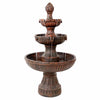
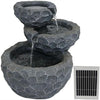
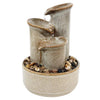

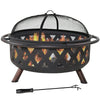
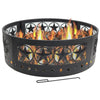

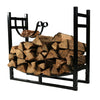
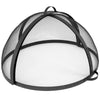
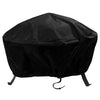
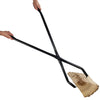
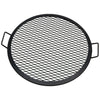
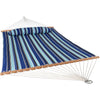
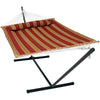
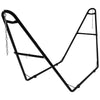

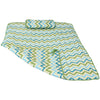
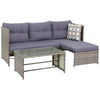
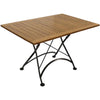
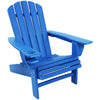
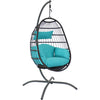

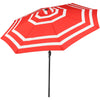
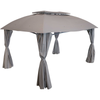

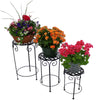
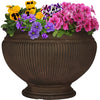
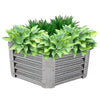
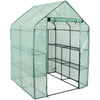
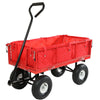
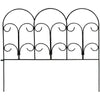
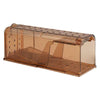
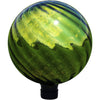
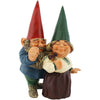

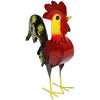
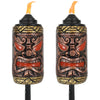

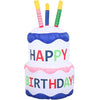
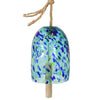


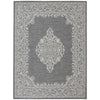
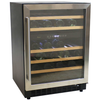
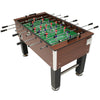
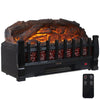
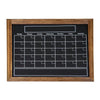





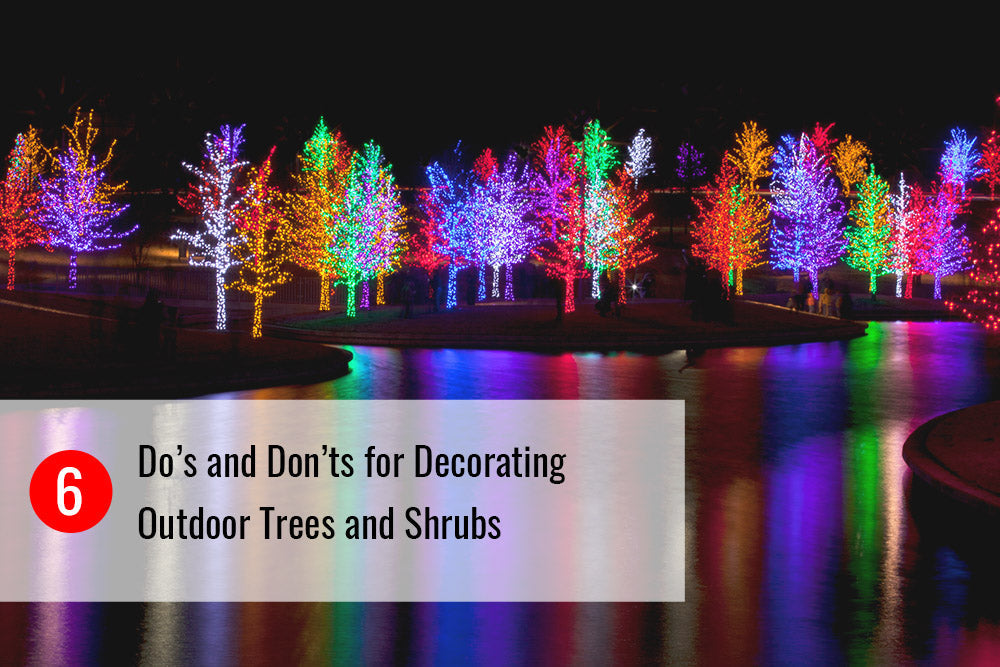








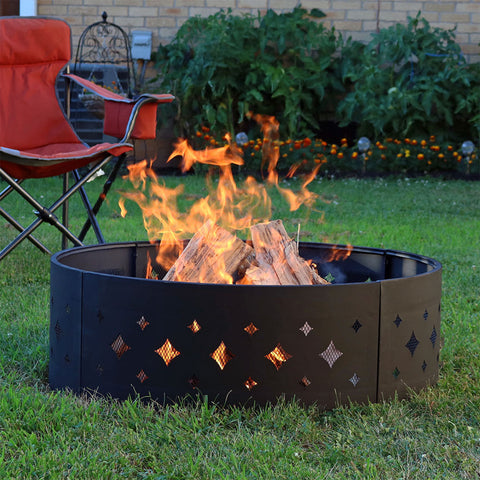






1 comment
Tim
Great article!